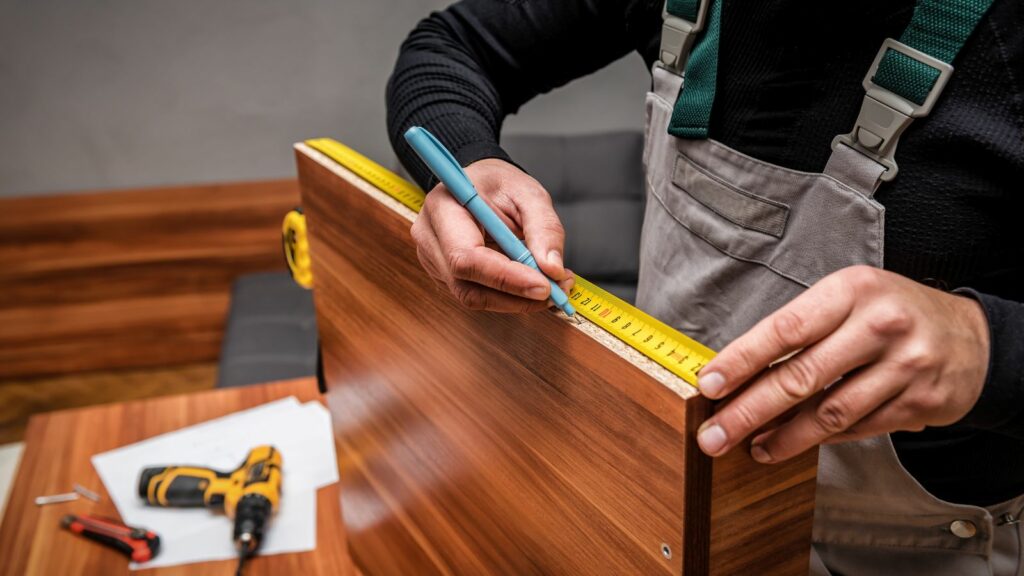Precision is the lifeline of any woodworking project. Whether you’re a seasoned carpenter or a beginner woodworker, accurate measurements are crucial to bringing your creative vision to life. This article aims to share insightful tips to help you master the art of woodworking measuring tips.
Woodworking Measuring Tips
Woodworking measuring tips reinvents not only precision but also boosts confidence and efficiency. With refined measurements, woodworking skill enhancement becomes effortless.

Profound understanding of accuracy and precision differentiates a skilled woodworker from a novice. While accuracy refers to the closeness to the target value, precision hinge on the consistency and repeatability of measurements. For example, let’s suppose a worker needs to cut three pieces of wood, each one being exactly 10 inches long. If the three pieces measure 10.1, 10, and 9.9 inches, the worker is accurate as the measurements are close to the target value. But the worker isn’t precise as the measurements aren’t consistent. On the flipside, cutting three pieces at exactly 10.1 inches exhibits precision since the measurements are consistent, but it lacks accuracy as it strays from the target value – 10 inches. Therefore, maintaining both accuracy and precision becomes imperative for achieving an immaculate output in woodworking.
Advancements in Digital Measurement Tools
Benefits of Laser Measuring Tools
Laser measuring tools serve as a paramount example of such advancements. Their core advantage lies in their ability of swift, precise distance measurements, even reaching areas that conventional instruments can’t. Unlike the traditional tape, a laser measurer sends a pulse of light to the target and calculates the distance based on the reflection speed, providing an instant, precise reading.
These tools significantly reduce the time carpenters spend measuring, allowing more focus on actual woodworking.
Maintenance and Care for Digital Tools

With the enhanced utility of digital tools comes the necessity of suitable care and maintenance. Prolonging the life value of these devices depends largely on their proper handling and storage. Ensuring these tools are clean and safe from an extreme environment is crucial.
For example, dust, grime or any other kind of accumulation could interfere with the functionality of a laser measuring tool. It’s recommended to clean the tools using a dry cloth after each use to maintain the accuracy of readings. The storage of digital tools is equally important, avoiding areas with high moisture levels, extreme temperatures, or prone to impacts. Even more, changing batteries at regular intervals often helps in preventing possible damages or corrosion.
Adherence to these measures not only preserves the tool’s longevity, but also the accuracy and reliability of each measurement made in woodworking projects. Remember, digital measurement tools represent an investment in terms of both finance and quality results, thus deserving an appropriate level of care.
Hands-on Projects to Improve Measurement Skills

Crafting a picture frame serves as an excellent start for beginners in woodworking. This project primarily deals with the fundamental techniques of measuring, cutting, and joining. Starting with simpler shapes like squares or rectangles imparts lessons on accurately translating measurements onto material. For this project, a straight ruler, a set square for accurate 90-degree angles, and a saw are indispensable tools. It also familiarizes the user with the handling of these tools, thus ensuring that every cut made matches the dimensions specified.
For the more seasoned woodworker, assembling a cabinet from scratch offer challenges and the opportunity to learn. Cabinet-making involves multiple components, each demanding precise measurements. For instance, cabinet doors must align perfectly with their corresponding frames, the shelves should fit without the slightest warp, and the drawers must open smoothly without a hitch. This task requires a tape measure for larger lengths, a combination square for smaller, precise markings, along with a circular saw for continually straight cuts.
Craftsman’s Success
Woodworking measuring tips isn’t just about precision—it’s about confidence, efficiency, and the quality of the final product. From the basic task of reading a tape measure to the advanced use of digital tools like laser measurers, every aspect contributes to a craftsman’s success. It’s key to remember that both accuracy and precision have their unique roles, and even minor errors can lead to significant problems.

